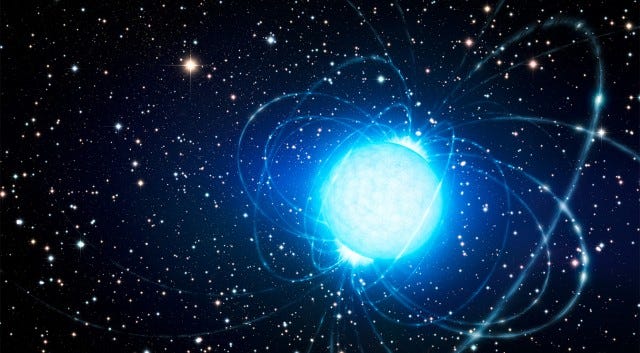Unraveling the Mystery Behind Fast Radio Bursts
Written on
Chapter 1: The Enigma of Fast Radio Bursts
Our understanding of the universe has vastly improved over the years, yet new enigmas continue to emerge. Recently, researchers have focused on the perplexing phenomenon known as fast radio bursts (FRBs). These brief bursts of electromagnetic radiation can outshine entire galaxies, and the underlying causes have remained elusive. However, a recent trio of studies has identified an FRB occurring within our own galaxy. Thanks to its proximity, scientists were able to trace this signal to a specific type of neutron star known as a magnetar.
Despite the tremendous energy released during an FRB, these events went unnoticed until 2007, when the first FRB was identified in data collected back in 2001. Since that landmark discovery, astronomers have detected countless FRBs scattered across the universe. Initially, these bursts appeared to be non-repeating, until FRB 121102 was discovered. This particular source has been observed to follow a 157-day cycle, facilitating closer examination.
Utilizing data from FRB 121102, researchers proposed that magnetars could be responsible for these bursts. While magnetars are a category of neutron stars similar to pulsars, they have a slower rotation but possess extraordinarily strong magnetic fields. With a magnetic strength approximately a trillion times that of Earth’s, a magnetar can significantly interfere with the electron arrangements in nearby molecules, effectively halting chemical processes in ordinary matter that ventures too close.

This brings us to SGR 1935+2154, a magnetar located about 30,000 light-years away—a considerable distance, yet still within the Milky Way. In April, this dormant star became active and started emitting high-energy photons, which is typical behavior. However, during this event, two observational instruments were simultaneously scanning for FRBs, and they detected an FRB exactly when SGR 1935+2154 illuminated the sky. Both the Canadian Hydrogen Intensity Mapping Experiment (CHIME) and Survey for Transient Astronomical Radio Emission 2 (STARE2) recorded an FRB originating from this magnetar.
Nevertheless, the mystery remains unresolved. As researchers note, the FRB detected from SGR 1935+2154 was only about one percent as potent as other FRBs observed from outside our galaxy. This suggests that perhaps only very young and energetic magnetars can generate bursts strong enough to be visible from such great distances. It’s possible that SGR 1935+2154 is exhibiting this phenomenon at a diminished power level. Should the research team confirm that this object is indeed producing FRBs, we can refine our understanding and potentially consider this case closed.
Now read:
- Scientists Find First Fast Radio Burst That Repeats At Regular Intervals
- Scientists Detect Brightest Ever Fast Radio Burst
- Mysterious fast radio bursts from outer space: Astronomers baffled, admit they could be alien in origin